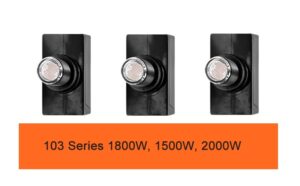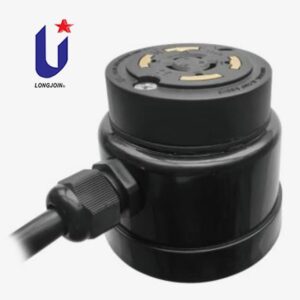Enhancing Outdoor Safety and Security: How Integrated photoelectric sensors and IoT are Revolutionizing Smart Lighting
Introduction
Outdoor lighting plays an important role in keeping areas safe. It lights up public spaces and reduces potential accidents and crimes. This is why proper lighting is important for roads, walkways, and parking areas. It makes public spaces safer for both pedestrians and vehicles.
However, maintaining and controlling outdoor lighting systems is not easy. Traditional systems need manual control or timers, which can be inefficient. photoelectric sensors and IoT (Internet of Things) technology offer a smart solution. These innovations make lighting systems more reliable and energy-efficient. They are also responsive to real-time conditions.

The Role of photoelectric sensors in Outdoor Lighting
What Are photoelectric sensors and How Do They Control Lighting?
photoelectric sensors are sensors that detect surrounding light levels. They are used in outdoor lighting systems to automatically turn lights on or off. photoelectric sensors work by responding to changes in natural light. For example, when natural light decreases at dusk, the photoelectric sensor turns the lights on. Likewise, when natural light increases in the day, they turn the lights off.
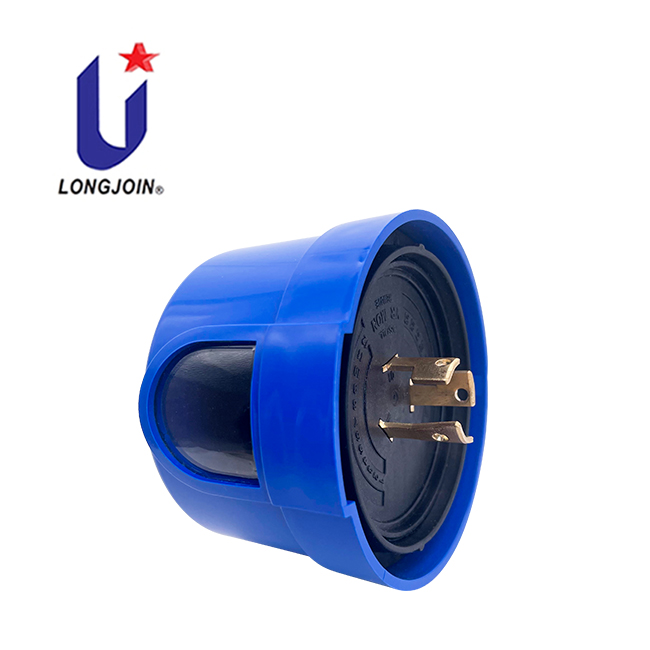
photoelectric sensors help maintain consistent lighting without any human need. This automatic control makes sure that outdoor areas are always well-lit when needed.
Benefits of photoelectric sensors in Outdoor Lighting
photoelectric sensors offer many benefits. They optimize energy use by turning lights on only when necessary. This reduces energy consumption and lowers working costs. Also, photoelectric sensors are reliable and easy to install. They make sure that lights are always working at night for public safety.
The Role of photoelectric sensors in Outdoor Lighting
Adjusting to Changes in Natural Light for Maximum Efficiency
photoelectric sensors automatically adjust lighting based on the surrounding light levels. This ability to sense and respond to ambient light optimizes illumination. For example, during overcast days or foggy conditions, photoelectric sensors can turn the lights on earlier to enhance visibility.
By adjusting to real-time conditions, photoelectric sensors ensure that the right amount of light is always provided. This not only saves energy but also creates a safer environment for public spaces.
Energy Savings and Cost Reduction with photoelectric sensors
A major advantage of photoelectric sensors is their energy efficiency. This is because lights are only turned on when needed and this reduces extra energy consumption. It also lowers electricity bills for municipalities and local houses.
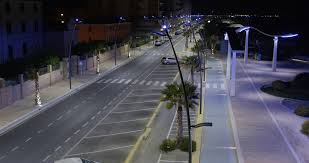
Using photoelectric sensors in large-scale applications like street lighting can save huge amounts of energy. WIth time these energy savings from photoelectric sensors can cover the installation costs. This makes them a budget-friendly solution.
Integration with IoT Technology: Revolutionizing Smart Lighting Systems
What is IoT and How Does It Connect to Lighting?
The Internet of Things (IoT) means a network of interrelated devices that can communicate with each other. In smart lighting systems, IoT allows for remote control and automation. Devices like streetlights, sensors, and cameras can all be linked to a centralized system..
Advantages of Combining photoelectric sensors with IoT Capabilities
The combination of photoelectric sensors and IoT technology brings many advantages. Real-time data from photoelectric sensors allows city managers to check and adjust light levels as needed. This helps in maintaining optimal lighting conditions while minimizing energy usage.
Another benefit is predictive maintenance. IoT-connected lighting systems can identify when a light is about to fail. This allows for proactive repairs, reducing downtime and improving system reliability.
Enhancing Safety Through Integrated photoelectric sensor and IoT Systems
Improving Visibility and Reducing Accidents
Smart lighting systems improve safety in outdoor spaces. With photoelectric sensors and IoT, lighting can be adjusted dynamically to meet the needs of specific situations. For example, in areas with high pedestrian traffic, lights can be brightened to improve visibility.
By ensuring well-lit spaces, integrated systems help reduce accidents. In poorly lit areas, the risk of tripping, falling, or vehicle accidents increases. photoelectric sensors provide consistent lighting, while IoT allows for quick adjustments.
Case Studies
Many cities worldwide have embraced smart lighting. For example, Barcelona and Copenhagen have implemented photoelectric sensor- and IoT-based systems. These systems adjust lighting based on traffic, weather, and time of day.
Copenhagen has seen a reduction in both energy consumption and accidents. By using smart lighting, the city optimizes visibility for drivers and pedestrians. This leads to safer public spaces and improved traffic flow.
Improving Security with photoelectric sensor- and IoT-Controlled Lighting
Preventing Crime
Areas with proper lighting are less prone to criminal activity. Dark streets and roads are more prone to criminal activities like theft and kidnappings. photoelectric sensors make sure that lights are always on in important areas. This makes it harder for criminals to work without being noticed.
Proactive Lighting Management and Security
IoT systems also collect valuable data that can improve security. For example, lighting systems can detect unusual activities like large crowds or unauthorized access. This information can be shared with security for immediate action.
By combining data analytics with lighting control, cities can manage security more effectively. This proactive approach helps reduce crime and improves public safety.
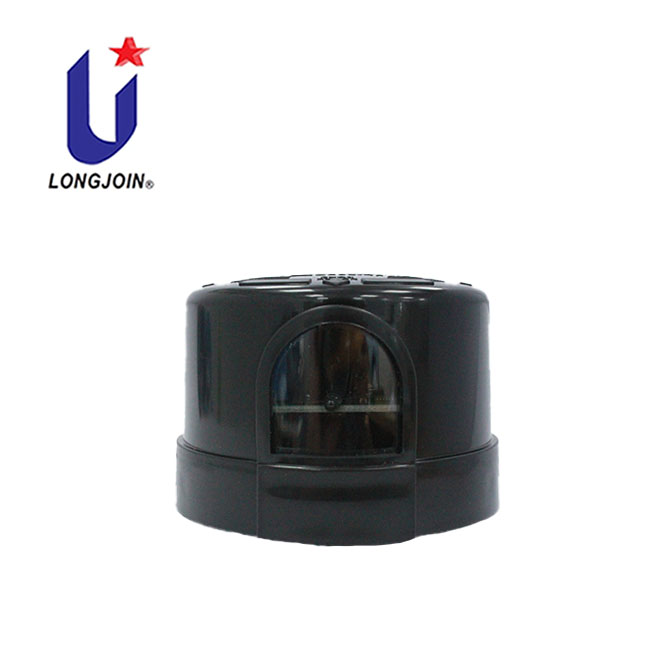
Energy Efficiency: How Smart Lighting Systems Save Energy and Costs
Reducing Energy Usage with Smart Controls
Smart lighting systems are designed to be energy-efficient. photoelectric sensors ensure lights are on only when needed. IoT technology provides additional controls, allowing for even more precise adjustments.
For instance, in low-traffic areas, lights can be dimmed to save energy. During peak times, lights can be brightened to ensure safety. These dynamic adjustments help optimize energy usage, reducing both consumption and costs.
Long-Term Financial Benefits of Energy Savings
Energy savings lead to significant cost reductions over time. Cities that adopt smart lighting systems can expect lower energy bills. Additionally, the reduced need for maintenance means fewer labor costs. In the long run, these financial benefits make smart lighting a worthwhile investment.
Future Developments: Advancing photoelectric sensor and IoT Technology
Emerging Trends in photoelectric sensor and IoT Integration
The future of smart lighting holds exciting possibilities. Further advancements in photoelectric sensor technology will lead to more enhanced control. For example, photoelectric sensors could be made to change light levels based on more complex environmental factors. These can be air quality or noise levels.
Similarly, IoT technology is continuously evolving. Future systems could integrate with other smart city technologies. These can be public transportation or emergency services.
The Role of AI and Machine Learning in Smart Lighting Systems
Artificial Intelligence (AI) and Machine Learning (ML) are also expected to play a role in the future of lighting. AI can analyze data from IoT systems to predict lighting needs more accurately. Machine learning algorithms can optimize lighting timing based on previous data. These innovations will make smart lighting even more efficient and effective.
Summing Up
The integration of photoelectric sensors and IoT has revolutionized outdoor lighting. These technologies improve safety by ensuring consistent, well-lit public spaces. They also improve security by preventing crime in the dark.
With technology advancing, the benefits of smart lighting are also expected to grow. Cities that invest in photoelectric sensor- and IoT-based systems are paving the way for a safer, more efficient future.
FAQs
How do photoelectric sensors contribute to outdoor lighting efficiency?
photoelectric sensors automatically adjust lighting based on ambient light. This ensures lights are on when needed, saving energy.
What are the advantages of integrating IoT with photoelectric sensors?
IoT allows for real-time control and monitoring. It also enables predictive maintenance and dynamic lighting adjustments.
How does smart lighting improve public safety?
Well-lit areas deter crime and reduce accidents. IoT systems can adjust lighting based on real-time conditions, enhancing safety.

